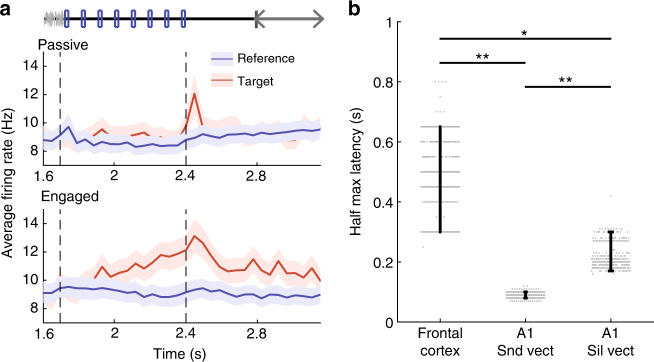Fig. 6.
Persistent, asymmetric response to target and reference stimuli in frontal cortex a Average PSTHs of all frontal cortex units in response to target and reference stimuli in both passive and engaged conditions. Note that the response to the target in the task-engaged state is very clear and appears late during the sound. Error bars: SEM over all units (n = 102). b Latency to half-maximum response for frontal cortex (for average PSTHs) and primary auditory cortex (for projected target-elicited data) in the task-engaged state. For the auditory cortex, data is projected either on the sound decoding vector or the silence decoding vector. Error bars represent 95% confidence intervals. (400 cross-validations. p ≤ 0.0025, p ≤ 0.0025 and p = 0.011; **p < 0.01; *p < 0.05). Note that all analysis in this figure is done after excluding lick-responsive units in A1 as described in Fig. 4

